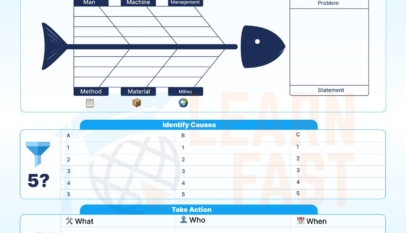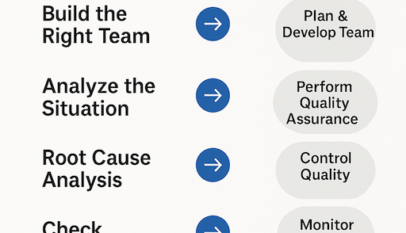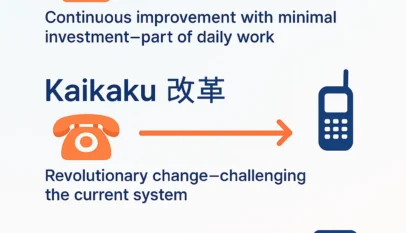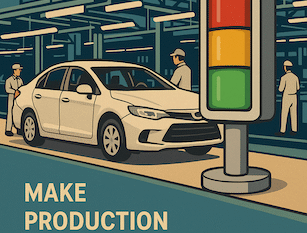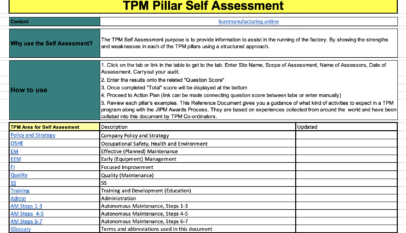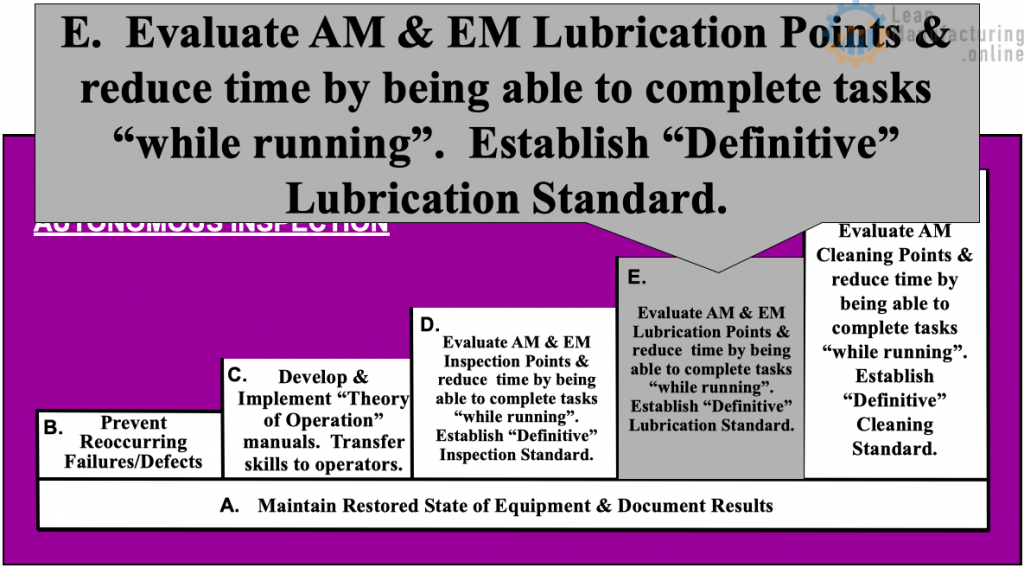
E. Operators & Mechanics will focus on reducing the time, tasks, and frequency listed on the Lubrication standards for both groups. Maintenance Lubrications will be evaluated to see if they can be transferred to operators.
This not only allows mechanics to have more time for value added activities (Rebuilds, FI’s etc.) but also increases the operators awareness of their equipment.
Lubrications need to be reviewed from the following four standpoints:
- Is it easy to see where the task needs to be done?
- Is the task itself easy to perform?
- Is it immediately apparent if something is wrong?
- Can the tasks be performed without shutting down the equipment?
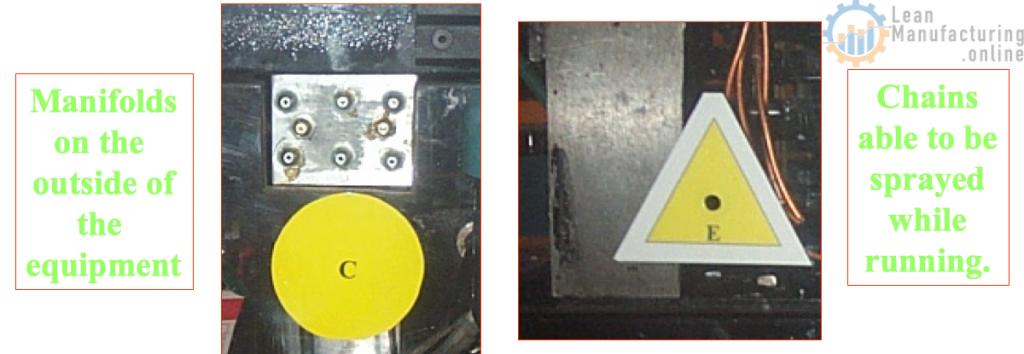
The following Flow Chart will lead you through the process of making the lubrications performed on the equipment more efficient. The Goal is to reduce the downtime needed for AM tasks and to have all Lubrications performed with the line running (Where Possible).
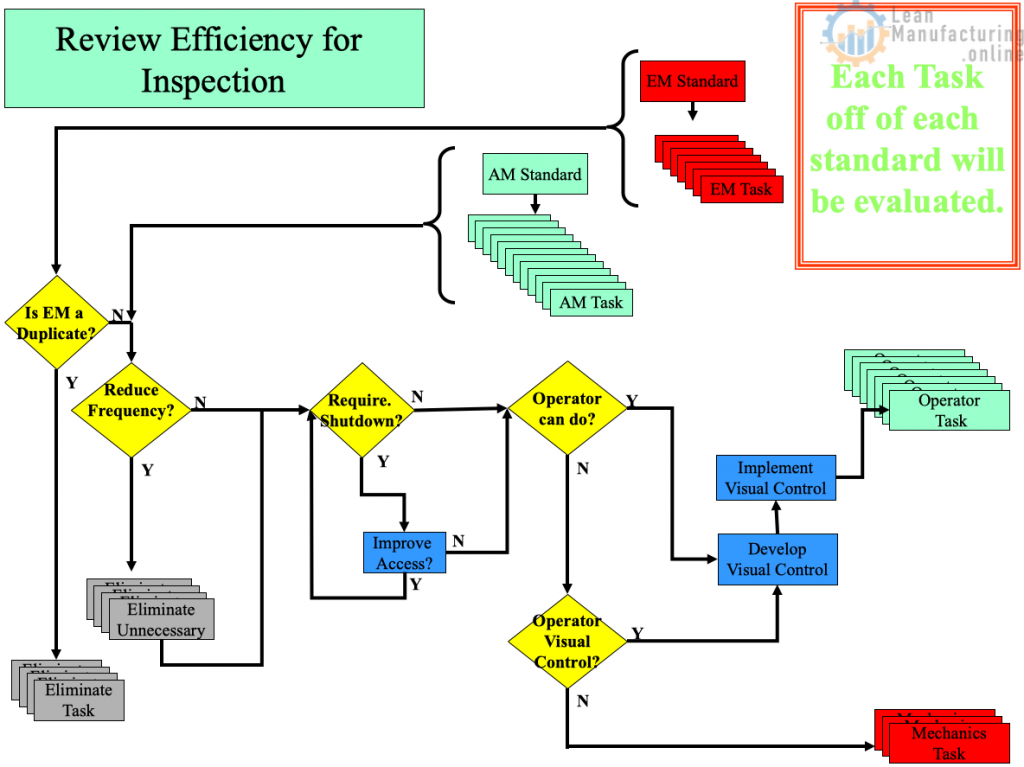

The final part of Step “E” is to total up the number of points reduced, time saved etc… after the evaluation of each standard using the sheet below. This information will be used for the KPI’s that will be generated for Step 5.
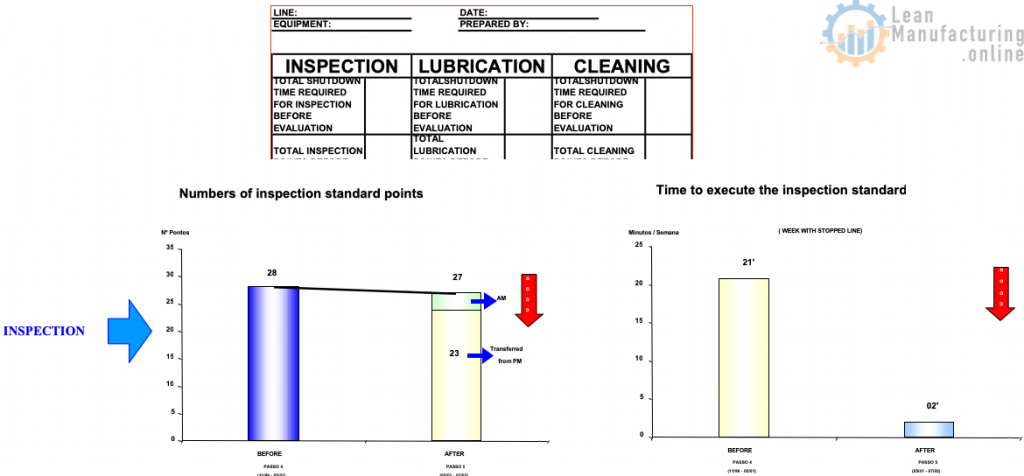
F. Evaluate AM Cleaning Points & reduce time by being able to complete tasks “while running”. Establish “Definitive” Cleaning Standard.
Look at flow chart from D. section and replace wording in black with this “At this point, it is necessary to develop visual controls for Cleaning Supplies and components (if not already done).”
After Evaluating the Cleaning Standard & reducing the time & frequency required to clean, it is time to establish the “Definitive” Cleaning Standard.
Items specified on tentative standards must be “Prioritized” and the most important ones transferred to the “Definitive” Standard. Prioritized By: Safety-Quality-Cost-Minor Stops-Breakdowns-Time
A form has been developed to aid in transferring “Tentative” Standard tasks to “Definitive” Standard tasks.


What about the points that don’t get transferred to the definitive standard? At this point in the TPM Methodology we should be Autonomously Inspecting and Cleaning our equipment. Those points not transferred still need to be done but should be done as second nature and keeping equipment reliability in mind. Tentative Standards will be kept to train new associates.
IN CONCLUSION:
AM and PM (EM) standards should identify exactly who is responsible for what tasks, and ensure that the two sets of standards together cover everything needed to keep the equipment clean, tight and properly lubricated at all times.
All new points needing addition to the standards will follow the previous evaluation flows to ensure it is an item for the “Definitive Standard”.
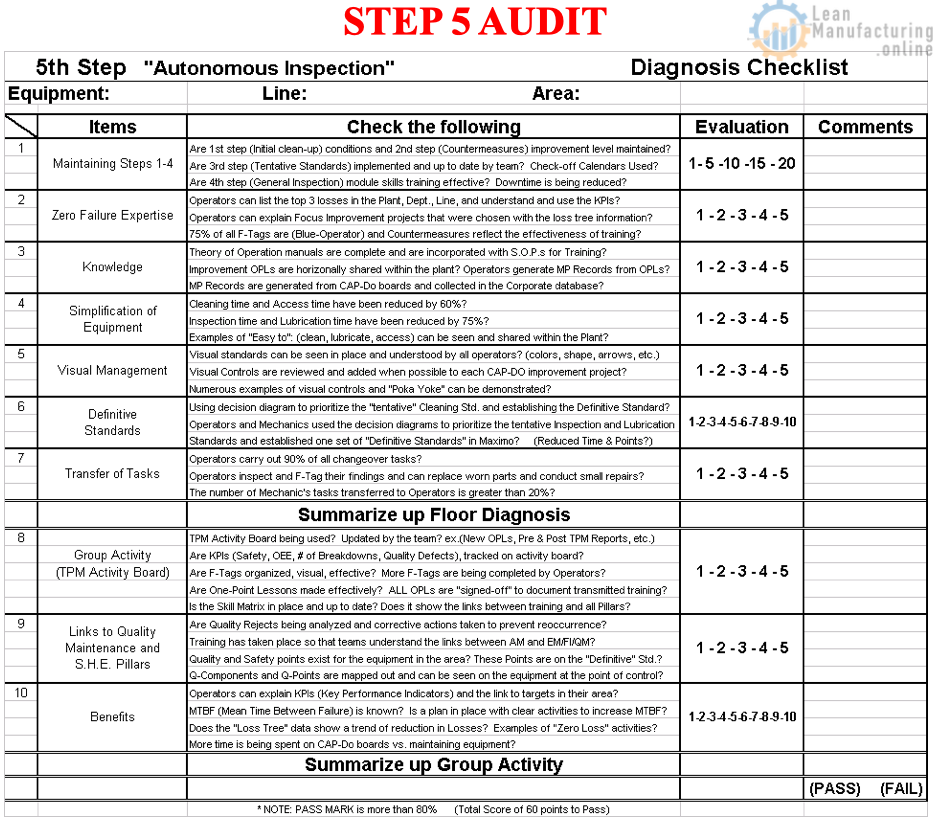
Autonomous Inspection Step 5 Key Point Indicators (KPI)
- Number of Cleaning (C), Lubrication (L) and Inspection (I) Tasks (reduced)
- Downtime for C, L & I Tasks (reduced)
- Number of Inspections with line stopped (eliminated)
- Number of Lubrication with line stopped (reduced)
- Number of Mechanic’s tasks transferred ( > 20%)
- Number of Blue Tags (75% of weekly)
Criteria to Pass this Training Course and Receive a “Green” on the Training Matrix:
Each piece of equipment must have all three “Definitive Standards” complete.
IT WILL TAKE THE WHOLE TIME TO COMPLETE…SO START NOW!!!
There must be equal involvement of each operator on each shift and you will be evaluated by your peers as to your contribution. Validate and Document Results for KPI’s.

